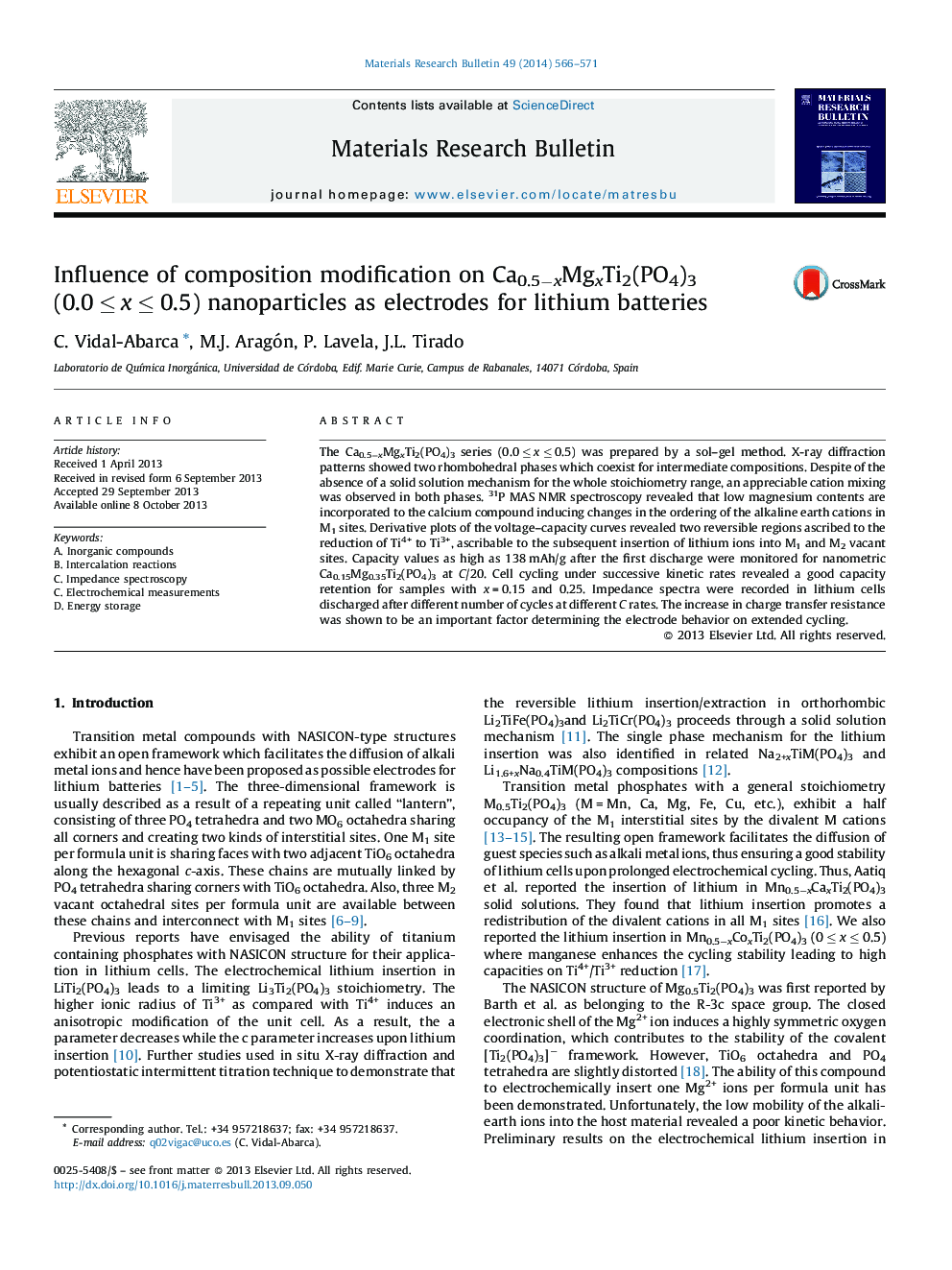| Article ID | Journal | Published Year | Pages | File Type |
|---|---|---|---|---|
| 1488653 | Materials Research Bulletin | 2014 | 6 Pages |
•Cation mixing was determined in the Ca0.5−xMgxTi2(PO4)3 biphasic series.•Nanometric Ca0.15Mg0.35Ti2(PO4)3 delivered 138 mAh/g at C/20 in lithium cells.•Low content of Ca2+ increases cell volume favoring Li+ insertion in R-3c framework.•Diminution of RSEI and RCT for Ca0.15Mg0.35Ti2(PO4)3 discharged electrodes.•Fast electrode response for x = 0.35.
The Ca0.5−xMgxTi2(PO4)3 series (0.0 ≤ x ≤ 0.5) was prepared by a sol–gel method. X-ray diffraction patterns showed two rhombohedral phases which coexist for intermediate compositions. Despite of the absence of a solid solution mechanism for the whole stoichiometry range, an appreciable cation mixing was observed in both phases. 31P MAS NMR spectroscopy revealed that low magnesium contents are incorporated to the calcium compound inducing changes in the ordering of the alkaline earth cations in M1 sites. Derivative plots of the voltage–capacity curves revealed two reversible regions ascribed to the reduction of Ti4+ to Ti3+, ascribable to the subsequent insertion of lithium ions into M1 and M2 vacant sites. Capacity values as high as 138 mAh/g after the first discharge were monitored for nanometric Ca0.15Mg0.35Ti2(PO4)3 at C/20. Cell cycling under successive kinetic rates revealed a good capacity retention for samples with x = 0.15 and 0.25. Impedance spectra were recorded in lithium cells discharged after different number of cycles at different C rates. The increase in charge transfer resistance was shown to be an important factor determining the electrode behavior on extended cycling.
Graphical abstractFigure optionsDownload full-size imageDownload as PowerPoint slide
